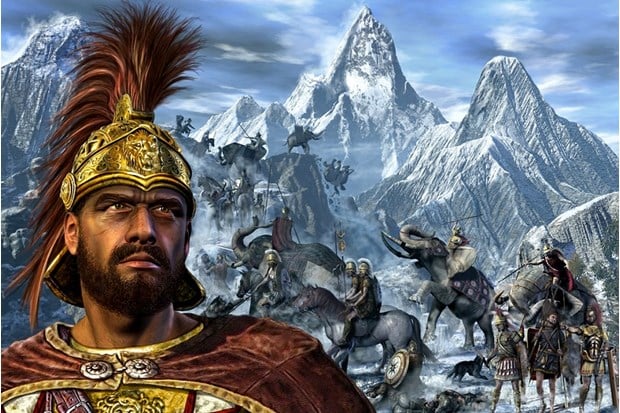BREACHING THE ALPS: HANNIBAL’S ICY ORDEAL
DEFYING THE ODDS, HANNIBAL CROSSES THE ALPS LATE IN THE SEASON, AND BY SO DOING TURNS THE TABLES ON ROME AND SEIZES THE INITIATIVE!
On a bitterly cold late autumn morning, high atop the Western Alps, a polyglot Army of Spaniards and North Africans gathered to hear the inspirational words of their twenty-nine year old commander. Bone-weary and increasingly ragged, the host was a skeleton of the force that had entered the mountains from the Rhone Valley only eleven days earlier. Twice they’d been ambushed by hostile Celtic tribesmen, in the process loosing thousands of men and hundreds of pack animals. For the last two days they had been camped here, at the top of the pass leading to Italy; recouping and allowing stragglers to catch-up.

It was the beginning of November, 218 BC [1] , and this army, the creation of one man’s implacable will, was attempting to accomplish the seemingly impossible: cross the snow-girded Alps and enter Italy, from whence to make war upon Rome in its own backyard.
That man was Hannibal Barca, and this was his war.
What we know as the Second Punic War was called by Roman writers the “Hannibalic War”. It was Hannibal, following in his father Hamilcar Barca’s very large footsteps, who carefully prepared his nation for this struggle. Continuing the conquest of Spain begun by Hamilcar he had honed the multi-ethnic Carthaginian army into his personal instrument of revenge against the Romans, who had humiliated Carthage in the First Punic War. It was he who’d defied Rome and attacked their ally, the town of Saguntum in Spain; the casus bellum of this new war.
Standing now on a promontory and facing his tired, shivering soldiers, the indefatigable Hannibal pointed. There, below them, Italy beckoned. Five months before they had left New Carthage (Qart Hadasht to the Carthaginians, and Carthago Nova in Latin)in Spain[2]. Now their goal was in sight. In the Po Valley below Rome-hating Celtic tribes waited to welcome them as allies. He told his warriors that they should imagine that they “were now scaling the ramparts not only of Italy, but of Rome itself…and after one, or, at the most, two battles they would have in their hands and in their power the citadel and capital of Italy.”[3] Years later, old veterans imagined they had actually seen Rome itself in the distance.
Only one more effort was needed, and this downhill. Their spirits buoyed, the army prepared for the final push, on into the valley below.
It had been a long, history-making trek.
Hannibal had prepared all winter, setting off in early spring. He crossed the Pyrenees with 50,000 infantry, 10,000 horse and 40 elephants[4]. His course was carefully arranged in advance, with guides ready to direct him over the mountains and the Celts of the Po Valley already in arms against the Romans (perhaps at his instigation). At the Rhone, however, he was forced to leave the trade road he’d been following (called by the ancients the Route of Hercules) when a Roman army under the Consul Publius Scipio (father of the future Africanus) arrived near Massilia (modern Marseilles), marching for Carthaginian Spain with the intent to intercept him.
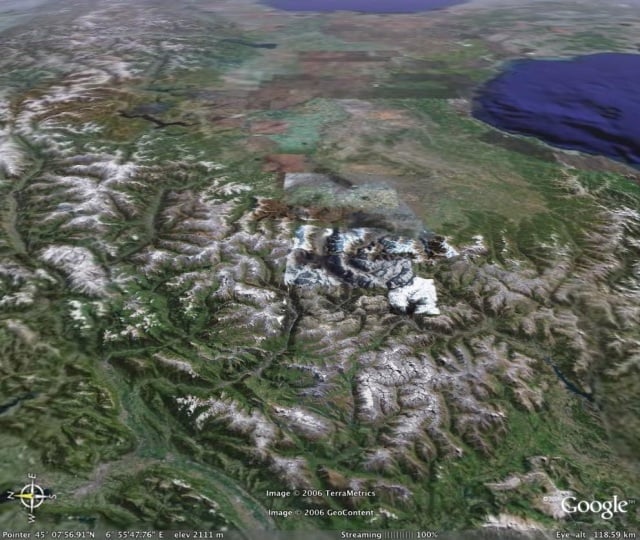
Hannibal wanted to avoid battle till he was on Roman soil. To elude Scipio, he was forced to march his forces north, up the Rhone River. With the help of a local Celtic tribe, he entered the Alps much further north than he’d intended, hear modern Grenoble; and begun the passage to Italy.
SEIZING THE INITIATIVE
Why was Hannibal intent upon such a hazardous plan? Surely it would have been better to await the Romans in Spain, close to his sources of supply and with the advantage of fighting on his own ground. Yet to sit and await Scipio’s advance was to surrender the initiative to the Romans; and in war, few things are more crucial than maintaining the initiative. Further, the Romans had a second army under their other Consul of that year[5], Sempronius Longus, operating in Sicily and intent on taking the war to Africa; as they had in the First Punic War.
This time, this war Hannibal had decided to take the fight to the Romans. He’d determined (correctly) that the strength of the Roman Republic lay in its seeming endless supply of trained recruits; provided both by the Romans themselves, and by the other Italian peoples allied with Rome. That the only way to defeat Rome was to deprive it of this advantage.
Rome’s military resources were indeed immense: in 226 BC, the Roman Senate had conducted a census, revealing that Rome and her Italian allies could produce 700,000 infantry and 70,000 cavalry[6]. Not that it could or would ever need to mobilize such a force: supplying so many troops in the field would have been impossible; not to mention the crippling effect on the Italian economy such a 100% mobilization would have had. But this pool of manpower was always available, to replenish any losses in the field. Like the head of a hydra, for every army destroyed another would take its place. Hannibal understood that winning battles alone would not win this war. Only by destroying Rome’s recruiting sources could Carthage hope to triumph.
Once in Italy and bolstered by victory, Hannibal was convinced that he could detach some or all of Rome’s Italian allies from her and bring Rome to her knees. As a base of operations from which to begin, the Po Valley in the north of Italy was fertile ground for both supplies and manpower. The Celtic tribes of the region were inveterate enemies of Rome, ready to join his cause and bolster his numbers.
Deciding thus to take the war into Italy, Hannibal had only two choices by which to do so: by sea or by land. The sea route was perilous: ever since the First Punic War, Carthage had been stripped of much of its former naval power, and the powerful Roman fleet patrolled the seas. An army at sea was extremely vulnerable to naval attack or storms (ancient galleys were always at risk of perishing in rough seas). To try this approach to Italy was to risk a watery grave.
That left the land route.
From Spain, there were two trade routes to Italy. The first hugged the coast, traveling through Liguria. This most traveled route risked meeting a Roman army on its way to Spain (which, in fact, the Romans sent, commanded by the Consul Scipio) and having to fight through to Italy. The alternate was to travel via the northern route, which followed the Durance River and would later become the Via Domitia. This is almost certainly the route Hannibal intended to take before being forced to enter the mountains even further north to avoid Scipio.
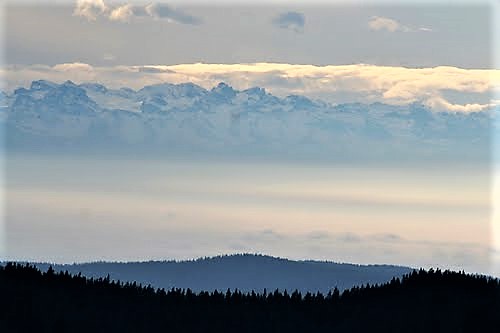
The Alps loom on the horizon, “the ramparts of Italy”.
ORDEAL IN THE ALPS
The Carthaginians began their trek in the middle of October. Snow was already falling in the upper passes, some of which were frozen all year round. They initially entered the territory of the Celtic Allobroge tribe. Hannibal had not planned to come this way, so had not negotiated passage through their lands in advance. So long as the army’s course passed through the broader valleys, the tribesmen left them alone, in fear of the Carthaginian cavalry and elephants. But as the way narrowed and the road hugged the slopes, the Allobroges prepared to dispute their passage.
Had they maintained their concealment till the Carthaginians were strung out below them, Hannibal might have suffered a crushing disaster. However, being Celts, individual Allobroge warriors rose up from concealment to issue challenges and brag about past deeds! Alerted, the Carthaginians were able to extricate themselves from the resulting skirmishes, though both sides took casualties. Hannibal sent scouts ahead, who returned to say that the barbarians held a choke point up ahead in force; but that at night they abandoned their position to retire to their nearby town in the hills.

Hannibal pitched camp short of this choke point. That night, taking a picked force, he occupied the narrows and the heights above it. At daybreak Hannibal began moving his army through. The Allobroges were at first nonplussed to find the Carthaginians moving through their anticipated roadblock. However, along the high and narrow road, with a steep gorge on one side and high ridges to the other, the Carthaginians were strung out, a tempting target. The Allobroges renewed the attack, sowing disorder. The losses among the baggage animals were most severe:
… the Carthaginians suffered great loss chiefly in horses and pack-mules, not so much at the hands of the barbarians as owing to the ground. For the road up the pass being not only narrow and uneven but precipitous, the least movement or disturbance caused many of the animals to be pushed over the precipice with their packs. [7]
In danger of losing his baggage train, Hannibal brought his picked force down from the heights, surprising the barbarians and routing them. Following them into the hills, he captured and sacked their town. Inside he found stores of food, and liberated prisoners and baggage animals taken earlier by the Allobroges.
In this exploit Hannibal’s action is reminiscent of Alexander the Great and the way in which he operated against the hostile tribes of Afghanistan: picketing the heights with an elite force of light troops and taking the fight to the mountain tribes on their own ground.
Hannibal spent the rest of the day resting his army before marching on. However, four days later he was ambushed once again.
Where the route passed through a narrow gorge, another Celtic tribe (which had been supplying his forces and guiding his march) pushed boulders down upon the army and rained down javelins. At one point, Hannibal’s column was cut in two, with the cavalry of the van on one side of the gorge and the rest on the other. Hannibal spent a difficult night on the cold rocks. Come morning, though, the army was able to push on; the fear of his elephants in particular causing the tribesmen to withdraw.
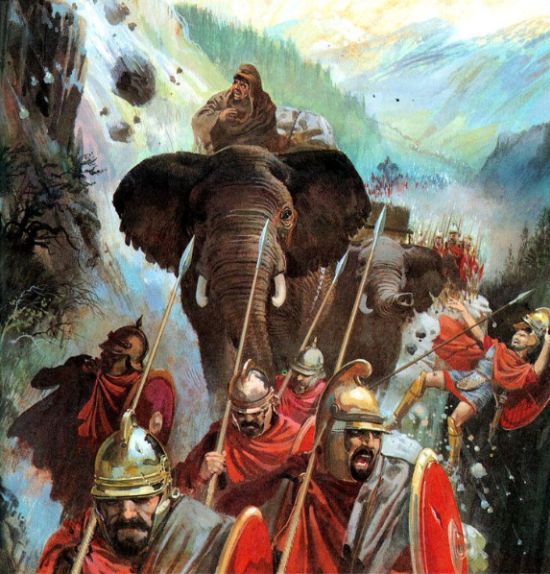
The next day the army camped at the top of the pass, and awaited stragglers. It was here that the tired and depleted force looked down onto the plains below, and prepared for the last stage of their journey.
The final four days were spent coming down from the mountains. Here the snow was year-round, and footing was treacherous. Men slid down the slopes on their shields, as though tobogganing.
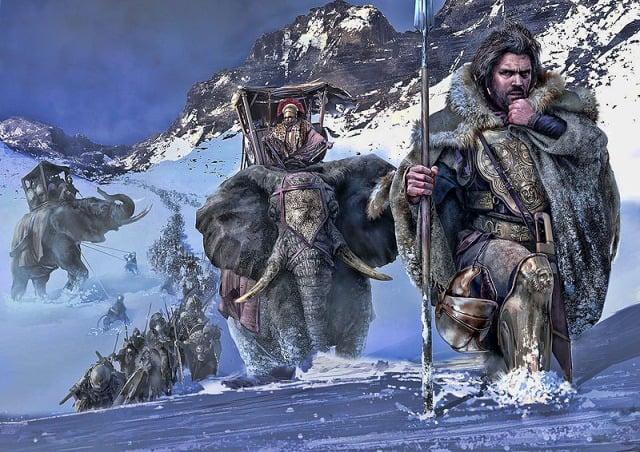
At one point a landslide blocked the path, a particularly large bolder making passage impossible. Hannibal overcame this obstacle in a unique way: his men gathered wood from all around and made a bonfire around the great rock. When it was sufficiently hot, they poured cold vinegar upon it, causing the rock to shatter into movable pieces! Once this impediment was removed, he set his men to making a terraced road down the slope, to allow for the passage of his elephants and baggage animals. On the fourth day of the descent his army reached the valleys below.
CONCLUSION
It had been a terrible ordeal. The journey had lasted 5 months, from its start in Spain to the Po Valley. The hazardous crossing of the Alps had taken 15 grueling days. Of the nearly 60,000 men who had followed Hannibal across the Pyrenees, only 26,000 survived the 993 mile trek across Gaul, the Rhone River, and the crossing of the Alps.[8] The toll had been particularly terrible on the Spanish tribesmen who comprised the bulk of his army: of the 32,000 (estimated) infantry, only 8,000 reached Italy; and of the 5,200 Spanish horse a mere 2,000 survived. (However, a large portion of these “casualties” may have been due to desertion: Spain was close enough to allow disaffected Spaniards to slip away at night and return home, an option not open to Hannibal’s African troops.) The elephants fared surprisingly well: Hannibal left Novo Carthage in the spring with 40; he reached Italy with 37.
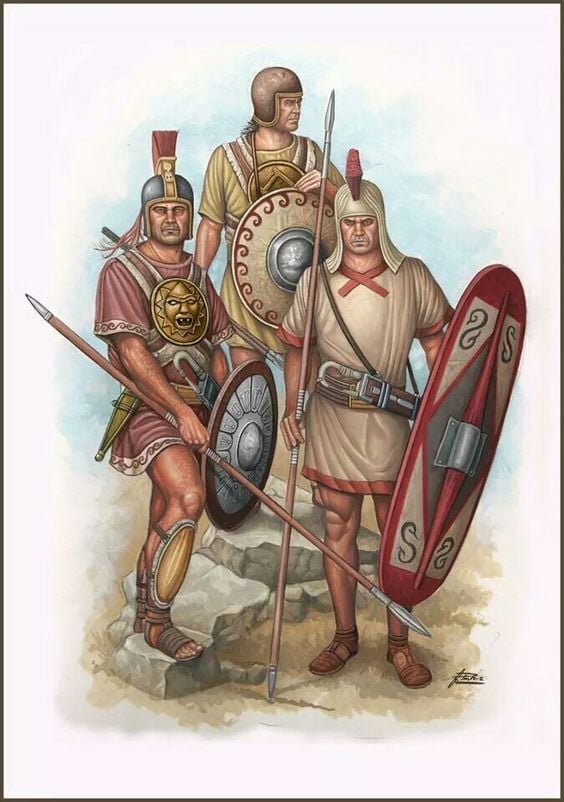
Hannibal’s Spanish infantry took appalling loses during the Alpine trek
But despite these losses Hannibal had triumphed over nature; and by so doing had thrown the Romans off balance, seizing the initiative from their grasp. This would not be the war they expected to fight, and it would take years before they regained their equilibrium. Hannibal crossed the Alps because it was precisely what the Romans never expected. A great captain of war, he understood that audacity and surprise are a commander’s greatest weapons. From now till the war’s end, these would be the touchstones of his generalship, and the ultimate secret to Hannibal’s success.
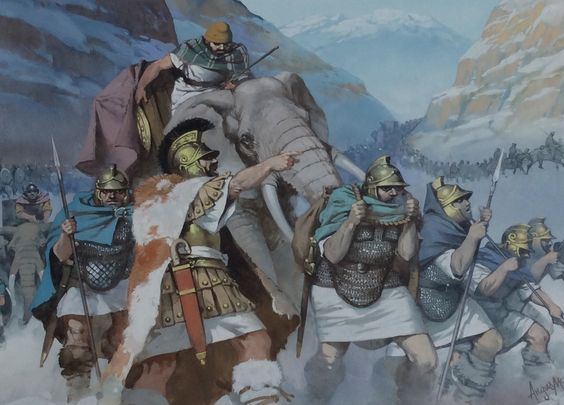
For an in-depth discussion of which route Hannibal took through the Alps

